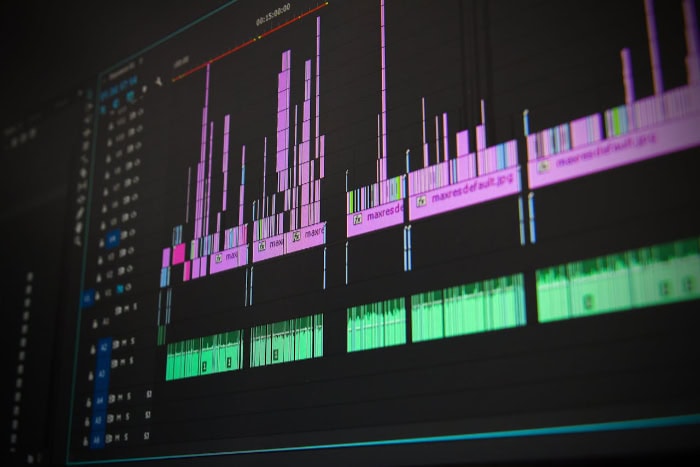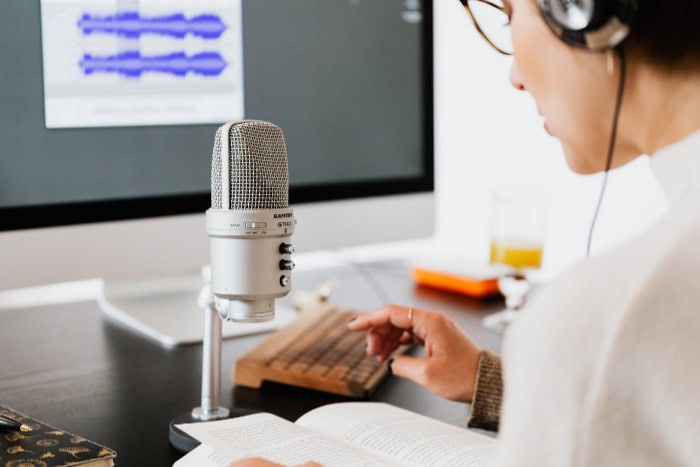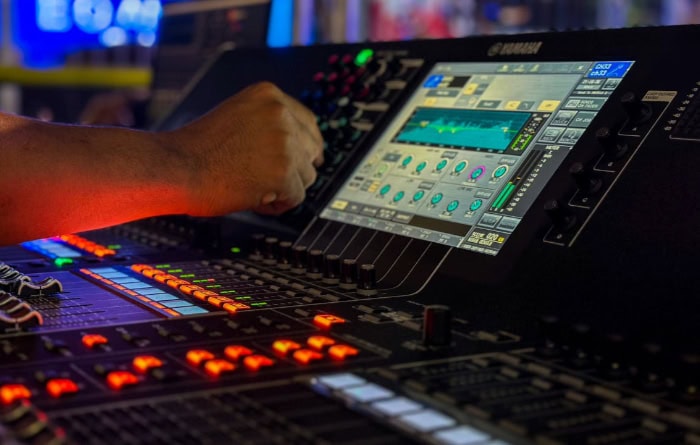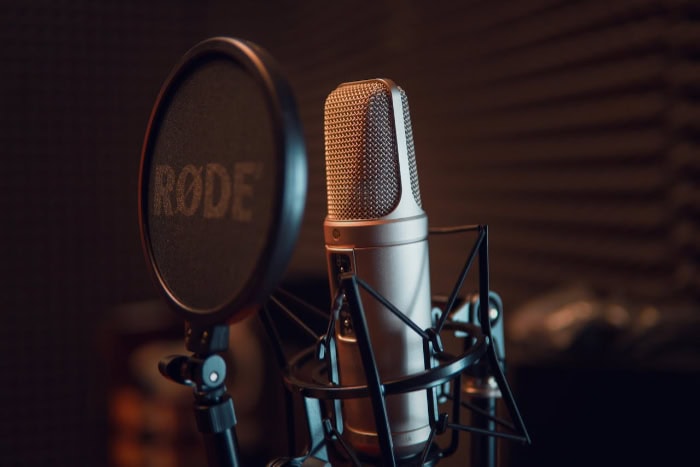What Is Sampling Rate, Sample Depths, and Bit Rates?

Sound surrounds us, from the rhythm of our favorite songs to the dialogue in a gripping film. But how does this sound get transformed into the digital formats we use every day? The process is powered by three critical elements: sampling rate, sample depth, and bit rate.
These technical terms may seem abstract, but they directly shape the clarity, depth, and richness of the audio you hear.
Choosing the right settings for these parameters can mean the difference between lifelike audio that immerses you in every detail and compressed sound that sacrifices quality for convenience.
Understanding Sampling Rate
Digital audio begins with capturing sound as accurately as possible. Since sound in its natural form exists as an analog wave, converting it into a digital format requires breaking it down into tiny snapshots called samples.
The sampling rate is the measure of how many of these samples are recorded every second. Think of it like taking thousands of still pictures to create a moving image. The more snapshots you take, the smoother and more detailed the final result. This concept is essential to how sound is digitized and reconstructed for playback.
Definition and Explanation
The sampling rate refers to the number of samples captured per second from an analog signal. It is measured in Hertz (Hz), with higher values reflecting more frequent sampling.
For instance, a sampling rate of 44,100 Hz (or 44.1 kHz) means the audio is sampled 44,100 times every second. Each sample captures a minuscule part of the sound wave, allowing computers to recreate the original signal as closely as possible when played back.
However, real-world sounds include a wide range of frequencies, from the low rumble of a bass drum to the high-pitched chirp of a bird. To faithfully reproduce these frequencies, the sampling rate needs to be high enough to capture the details present in the original sound wave.
This is where the science of digital audio conversion comes into play.
Impact on Audio Quality
The quality of digital audio largely depends on how accurately these samples mirror the original analog signal. A higher sampling rate means more data points are recorded, allowing the system to preserve intricate frequency details with minimal distortion.
As a result, the audio playback is closer to how it originally sounded.
According to the Nyquist-Shannon theorem, the sampling rate must be at least twice the highest frequency present in the audio signal to avoid a phenomenon called aliasing. Aliasing occurs when a signal is sampled at too low of a rate, causing higher frequencies to be inaccurately reproduced as lower ones.
For example, the human ear typically hears frequencies ranging from 20 Hz to 20,000 Hz. To capture these frequencies without distortion, the standard CD sampling rate is set at 44.1 kHz—slightly more than double the upper limit of human hearing.
For professional and high-resolution audio, sampling rates can go even higher. This allows for capturing subtle overtones and frequencies beyond human perception, which can enhance clarity and richness when played through high-quality audio systems.
Common Sampling Rates
Over the years, certain sampling rates have become industry standards, tailored for different purposes. The most common rate is 44.1 kHz, the benchmark for audio CDs, which ensures accurate reproduction of the audible frequency range.
For video production and broadcasting, 48 kHz is the standard, offering slightly more headroom and compatibility with diverse media formats.
For high-resolution music and professional recording, sampling rates of 96 kHz and even 192 kHz are often used, capturing exceptional detail and depth. While these higher rates are not always noticeable to the average listener, they provide greater flexibility for audio editing and mastering processes.
By shaping how analog sound is converted into digital audio, the sampling rate has a significant influence on both the quality of the sound you hear and its suitability for various applications. Whether you’re recording a podcast, mixing a song, or mastering audio for film, choosing the appropriate sampling rate plays a vital role in achieving the desired results.
Exploring Sample Depth (Bit Depth)

While the sampling rate decides how often a sound wave is measured, the bit depth determines how precisely these measurements are recorded. Every sample captured during the digital conversion process represents the amplitude, or loudness, of the audio signal at a specific moment.
The bit depth specifies the number of bits used to store each sample, directly influencing the level of detail and accuracy in the audio file. Its role is crucial in shaping the dynamic range and clarity of the final sound reproduction.
Definition and Explanation
Bit depth refers to the amount of information each sample contains about the amplitude of the sound. A higher bit depth allows for a more accurate representation of the original sound wave by increasing the number of possible values a sample can take.
For example, 16-bit depth provides 65,536 possible values (2^16), while 24-bit offers over 16 million (2^24).
This precision directly impacts the dynamic range of the audio—the span between the loudest and quietest parts of a recording. It also affects the noise floor, which is the background noise inherent in any digital recording.
A higher bit depth makes quieter details easier to distinguish by reducing the impact of quantization noise, which occurs when the continuous analog wave is approximated into discrete digital values.
To put it simply, the bit depth controls how much detail is preserved in the quiet and subtle parts of a sound. A low bit depth may result in noticeable graininess or distortion, especially in softer passages, whereas a higher bit depth delivers smoother, more natural audio.
Impact on Audio Quality
The audible difference between bit depths can often be subtle, but it becomes apparent in more dynamic audio like orchestral music, film soundtracks, or live recordings. A higher bit depth improves the resolution of the audio and provides greater headroom for changes in volume.
This is particularly important during the mixing, editing, and mastering stages of production, where maintaining fine details and avoiding clipping or distortion are critical.
Quantization noise, a byproduct of turning analog signals into digital, is significantly reduced with higher bit depths. For instance, 16-bit audio has a theoretical dynamic range of 96 dB, which is sufficient for most consumer audio formats.
Professional audio recordings, however, often use 24-bit depth to achieve a dynamic range of 144 dB. This provides an exceptionally clean signal, ensuring that even the faintest whispers or background sounds are captured without being overwhelmed by noise.
While using excessively high bit depths may go unnoticed in casual listening, they offer invaluable flexibility when working on audio projects. It allows producers to fine-tune recordings without introducing artifacts or errors during post-production.
Common Bit Depths
Standard bit depths are tailored to suit specific audio formats and applications. For instance, 16-bit depth is the standard for audio CDs, capable of delivering a high-quality listening experience for most users.
This bit depth strikes a balance between audio fidelity and manageable file size, making it ideal for general playback.
In professional audio environments, 24-bit depth is widely used. It captures more subtle nuances, making it suitable for high-fidelity music, studio recordings, and cinematic sound design.
Some advanced systems even use 32-bit float audio, which offers extreme precision and virtually eliminates clipping. While this level of detail is unnecessary for playback, it provides maximum control in complex audio workflows.
Choosing an appropriate bit depth plays a significant role in achieving a clean and detailed sound. Different settings accommodate different types of content and usage scenarios, from casual listening to professional production.
Every bit of depth enhances the ability of audio to connect us to the emotions and textures of sound, ensuring that nothing gets lost in translation.
Decoding Bit Rate

When you listen to audio, whether it's streamed online or saved on your device, the quality of that sound often boils down to something called the bit rate. While sampling rate and bit depth determine how audio is recorded, the bit rate dictates how much of that information is delivered to you per second during playback.
Bit rate is a critical factor in finding the balance between sound quality and file size, and it has a direct impact on how you experience music, podcasts, and other digital audio formats.
Definition and Calculation
Bit rate represents the amount of data processed per second in an audio file and is typically measured in kilobits per second (kbps) or megabits per second (Mbps). It reflects how much audio information is being transmitted or stored, directly affecting how detailed and accurate the sound is.
The calculation of bit rate involves three main components: sampling rate, bit depth, and channel count. Multiplying these factors gives you the total bit rate.
For example, in a stereo (two-channel) audio file with a sampling rate of 44.1 kHz and a bit depth of 16, the calculation would look like this:
Bit Rate = Sampling Rate × Bit Depth × Channels
For the above example:
44,100 samples per second × 16 bits per sample × 2 channels = 1,411,200 bits per second, or 1,411 kbps.
This means that a standard uncompressed CD-quality stereo audio track has a bit rate of 1,411 kbps. Higher bit rates indicate more data being processed per second, which translates to higher-quality audio, but also larger file sizes.
Impact on File Size and Quality
Bit rate directly influences both the quality of the audio and the amount of storage it requires. A higher bit rate allows for more information to be included, resulting in richer and more detailed sound.
This is especially important for high-definition audio formats, where listeners expect every nuance of the performance to come through.
However, higher bit rates also mean larger file sizes and greater bandwidth requirements for streaming. For instance, an uncompressed audio file with a bit rate of 1,411 kbps takes up significantly more space than a compressed MP3 file at 128 kbps.
Compression techniques, such as those used in MP3 or AAC formats, aim to reduce file size while maintaining acceptable sound quality. This is done by removing audio data deemed less critical to human hearing, but the trade-off is a loss in fidelity, especially for lower bit rates.
For streaming services, bit rate becomes a balancing act. Lower bit rates ensure smooth playback without buffering, even on slower internet connections, but may compromise on quality.
Conversely, higher bit rates offer better sound but may not be practical for all users.
Examples of Bit Rates
Audio formats and applications use a wide range of bit rates, depending on their purpose. For compressed formats like MP3, common bit rates include 128 kbps, 192 kbps, and 320 kbps.
A 128 kbps MP3, while space-efficient, loses noticeable amounts of detail and texture, particularly in complex music. A 320 kbps MP3, on the other hand, provides much closer quality to the original while still keeping file sizes manageable.
For lossless audio formats like FLAC or WAV, bit rates are significantly higher. CD-quality FLAC files typically have bit rates of around 1,411 kbps, while high-resolution audio formats with higher sampling rates and bit depths can exceed 9,000 kbps.
These formats preserve the full range of audio detail, making them ideal for audiophiles or professional users working in audio production.
Bit rate serves as the bridge between technical limitations and the pursuit of the best possible listening experience. From highly compressed MP3s for portability to high-fidelity FLAC files for pristine audio, choosing the right bit rate depends on the application and the listener's priorities.
Interrelation Between Sampling Rate, Bit Depth, and Bit Rate

Digital audio may seem complex, but it all comes down to how well sound is captured, represented, and delivered. Sampling rate, bit depth, and bit rate are not independent parameters—they are interconnected pieces of the digital audio puzzle.
Together, they determine the resolution, clarity, and size of an audio file, shaping the listening experience. Balancing these elements is crucial for different applications, from professional recordings to everyday streaming.
How They Work Together
Sampling rate and bit depth form the foundation of digital audio resolution. The sampling rate determines how frequently an audio wave is measured, capturing the wave’s frequency details.
Bit depth, on the other hand, defines the precision of each measurement, focusing on the range of loudness levels that can be recorded. A higher sampling rate preserves more frequency information, while increased bit depth ensures finer resolution in the amplitude of the sound.
For example, an audio file with a sampling rate of 44.1 kHz and a bit depth of 16 bits records 44,100 measurements per second, with each measurement allowing for 65,536 possible amplitude values. Together, these parameters determine how faithfully the audio signal is captured and reproduced when played back.
However, these choices directly impact the bit rate, which reflects the total amount of data processed per second.
Bit rate is essentially the product of the sampling rate, bit depth, and channel count. When either the sampling rate or bit depth increases, the bit rate also rises, resulting in larger file sizes.
For instance, shifting from 16-bit to 24-bit depth or doubling the sampling rate from 44.1 kHz to 88.2 kHz will significantly increase the bit rate, leading to higher-quality audio but also greater storage and transmission demands.
The three parameters work together to strike a balance between resolution and efficiency. High sampling rates and bit depths provide pristine, natural sound but require a higher bit rate to store or stream.
On the other hand, reducing one or more of these factors may compromise audio fidelity but make the file smaller and easier to handle.
Trade-Offs Between Quality and Efficiency
While achieving the best sound quality might seem like the obvious goal, practical limitations often require compromises. As sampling rate and bit depth increase, the amount of data needed to store or transmit audio files grows exponentially.
This means that high-resolution audio formats demand more storage space and greater processing power, which may not be feasible for all devices or use cases.
For instance, high-definition audio with a 96 kHz sampling rate and 24-bit depth delivers exceptional clarity, capturing every subtle detail and nuance.
However, such files are significantly larger than standard 44.1 kHz, 16-bit audio. For applications like music streaming or portable devices, where bandwidth or storage is limited, compressed formats with lower bit rates are used to balance quality and efficiency. Formats such as MP3 or AAC achieve smaller file sizes by reducing sampling data while preserving audio that is most perceptible to the human ear.
Similarly, professional audio editors often work with higher bit depths and sampling rates because they provide more headroom and flexibility during post-production, allowing for precise adjustments without introducing artifacts. Once the editing is complete, the final audio may be exported at a lower resolution to ensure compatibility with consumer systems.
The choice between high-quality audio and practical efficiency depends heavily on the context. For casual listening, file size and streaming speed often take priority over maximum fidelity.
However, for critical applications like film scoring, live music recordings, or studio mastering, the highest settings are often necessary to ensure every detail is preserved.
Finding the right balance between these parameters ensures that digital audio meets the specific needs of both the listener and the purpose, whether it's delivering clear dialogue on a podcast or capturing the full richness of an orchestral performance.
Practical Applications and Use Cases

Digital audio settings, such as sampling rate, bit depth, and bit rate, are not one-size-fits-all. The ideal configuration depends on the purpose of the audio, the target audience, and the technical requirements of the platform or medium.
Whether it’s for casual streaming, high-fidelity music production, or podcasting, choosing the right settings ensures that the audio meets quality expectations while staying practical for storage and transmission.
Choosing Appropriate Settings
Selecting optimal settings starts with understanding the context in which the audio will be used. For music production, a higher sampling rate, such as 96 kHz, and a bit depth of 24 bits are often recommended.
These settings capture every nuance of a performance, providing the flexibility needed during editing and mastering. Such high-resolution audio formats ensure that even subtle details, such as the decay of a reverb or quiet background tones, are retained in the production process.
Once finalized, the tracks can be exported to consumer-friendly formats like 44.1 kHz, 16-bit for distribution.
For podcasting, where speech clarity is the primary goal, a sampling rate of 44.1 kHz and a bit depth of 16 bits are typically sufficient. Since spoken content doesn’t require the same dynamic range or frequency detail as music, these settings help maintain audio quality while keeping file sizes manageable.
Lower bit rates, such as 128 kbps, are also commonly used for compressed podcast files to ensure quick downloads and smooth streaming.
Streaming services must account for a wide range of devices and internet speeds. As a result, they often balance quality with efficiency by using compressed formats like AAC or MP3.
Bit rates of 128 kbps to 320 kbps are commonly employed, depending on the platform and content type. Lower bit rates may be acceptable for casual listeners, but higher rates are often used for music to preserve audible detail.
When working on film soundtracks or live recordings, the settings are more demanding. Movies and concerts often use 48 kHz sampling rates, as this is the industry standard for video synchronization.
Additionally, the depth provided by 24-bit audio ensures that dynamic shifts, from quiet dialogue to explosive action scenes, are captured with detail and accuracy.
Common Industry Standards
Different industries have developed standard audio settings based on practical and historical needs. For example, CDs, which ushered in the era of digital audio for consumers, use a standard of 44.1 kHz sampling rate and 16-bit depth.
This remains a benchmark for many music releases.
In the video production industry, a sampling rate of 48 kHz is the norm, as it syncs well with video frame rates and ensures consistency across multimedia applications. Professional recording environments, however, often work with 96 kHz or even 192 kHz with a 24-bit depth, especially for projects requiring high fidelity or future-proofing.
Streaming platforms adopt compressed formats to optimize bandwidth and storage. Spotify, for instance, uses varying bit rates of up to 320 kbps for its premium users, while platforms like YouTube and Netflix prioritize efficient delivery with adjustable bit rates depending on connection speed.
Lossless streaming services, such as those offering FLAC formats, provide bit rates exceeding 1,400 kbps to satisfy audiophiles seeking pristine sound quality.
Challenges and Solutions
Working with digital audio is not without its challenges, and some issues arise from the limitations of hardware, storage, and network speeds. For instance, aliasing can occur when the sampling rate is too low to properly capture high frequencies, causing undesirable distortion.
This is countered by adhering to the recommendations of the Nyquist-Shannon theorem, ensuring that the sampling rate is at least twice the highest frequency in the audio. Employing anti-aliasing filters during recording or conversion further reduces this risk.
Another challenge lies in storage and file size. High-resolution audio files with elevated sampling rates and bit depths can occupy significant amounts of space.
For example, a 3-minute uncompressed track in 96 kHz, 24-bit format can exceed 100 MB—a size impractical for many devices or users. Compression algorithms, such as those in MP3 or AAC formats, help reduce file sizes without overly compromising quality, making them suitable for everyday use.
Processing power is another limitation, particularly for devices like smartphones or streaming platforms, which must decode audio files in real time. To address this, formats with variable bit rates (VBR) are often used, optimizing file sizes for smoother playback while maintaining acceptable quality levels in quieter or less complex portions of the audio.
Ultimately, the practical application of these settings is about managing trade-offs. Tools like audio converters, mastering software, and format-specific optimizations allow creators to tailor their output based on their priorities, ensuring that the final audio meets both quality and delivery requirements.
Conclusion
Digital audio relies on the interplay of sampling rate, bit depth, and bit rate to convert, store, and reproduce sound with precision. Each parameter plays a distinct role—sampling rate defines how frequently audio is measured, bit depth determines the accuracy of those measurements, and bit rate ties them together to reflect the amount of data processed per second.
Together, these elements shape the clarity, detail, and overall quality of audio, balancing technical accuracy with practical considerations like file size and processing power.
Whether producing music, recording podcasts, or streaming online, choosing appropriate settings ensures the audio suits its intended purpose. Industry standards, tailored for various use cases, provide a helpful starting point, while the challenges of storage and quality trade-offs can be managed with modern tools and formats.
Understanding these core principles allows for better decisions in creating and enjoying sound, unlocking the full potential of digital audio across countless applications.


